Călin Bumbuluţ1, Andrei Bumbuluţ2, Alina Daniela Negru1, Rumelia Koren3
1SCM dr Bumbuluţ-dr Balaj, Satu Mare, România, 2Faculty of Medicine, Iuliu Haţieganu University of Medicine and Pharmacy, Cluj Napoca, România, 3Department of Pathology, Hasharon Hospital, Petah Tikva, and Sackler Faculty of Medicine, Tel-Aviv University, Israel
The image we each have of our own body, profoundly affects the way how we relate to society. Depictions of obesity in art provide a context for thinking about the changing meaning of obesity to individuals and society. During the Middle Ages and the Renaissance obesity was often seen as a sign of wealth, and was relatively common among the elite [1]. Of course, in our days we now that obesity are bad for health, and obesity prevention is a public health imperative.
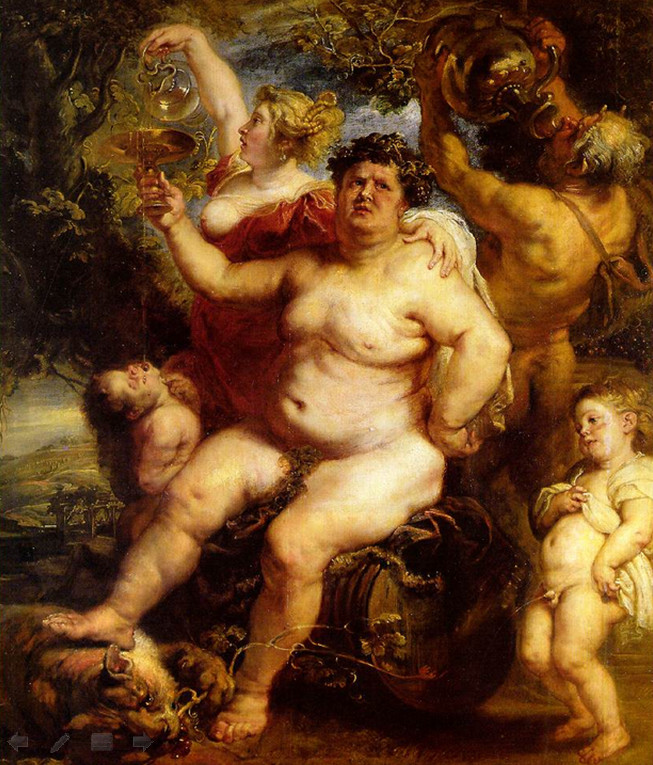
Peter-Paul-Rubens, BACCHUS
In a systematic review of portraits and description of visible signs of illness [2] on a collection of portraits depicting 3615 inhabitants of a defined geographical region and covering several centuries, overweight in people was more common in men than in women (30% vs. 44%). Overweight was most common in sitters aged >40 than in those aged 40 or younger. Other conditions, such as amputated limbs, missing teeth, or osteoarthritis deformations were surprisingly rare in the portraits under evaluation. The association between overweight and higher age was most pronounced during the 17th and 18th centuries. During the 18th century among people over 40, 79% of men were overweight compared with 51% of women. From the 18th to the 20th century the prevalence of overweight decreased in men over 40.
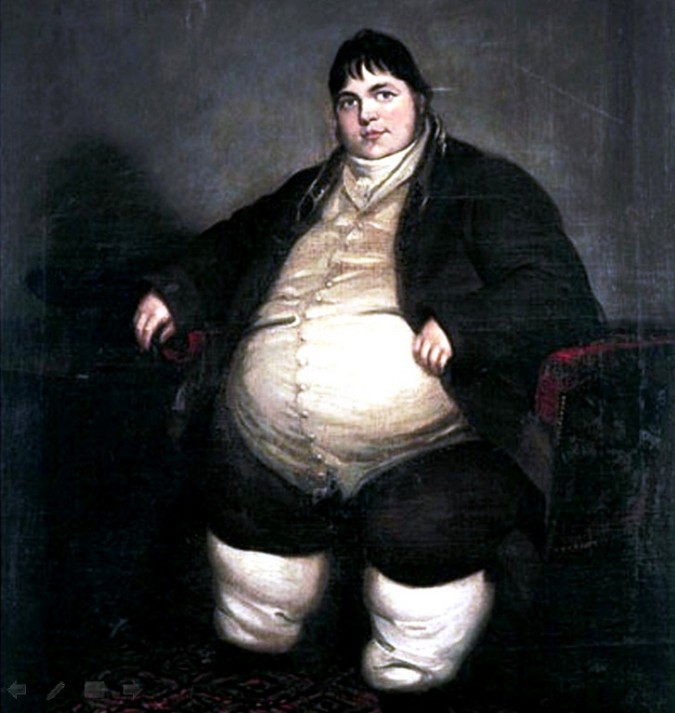
Daniel Lambert, weighing almost 40 stone, oil on canvas, British, 19th century
In the next Figure is an example of the Baroque taste for representations of freaks of nature and the attraction of people with some of physical or psychological anomaly. In that painting it takes the form of a depiction of a girl of extraordinary size, probably due to Prader-Willi syndrome [3]. The placement of the model over a neutral background follows the tradition of Spanish court portraiture. Eugenia Martínez Vallejo was taken to the court in 1680 and her portrait was painted there at the order of King Carlos II. She was one of the individuals with physical or psychological defects that formed a small court around the Spanish royal children.
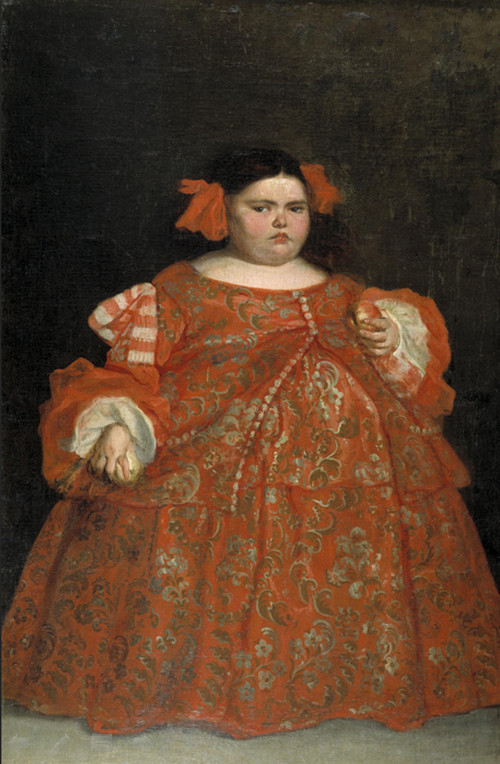
Juan Carreño de Miranda, Eugenia Martínez Vallejo, „La monstrua vestida”, oil on canvas, Madrid, Museo del Prado, 1680
The 8th year old girl was called „The Monster” due to her obesity. Another painting exists with Eugenia without clothes. Both paintings are in the Prado Museum. Her deformity is emphasized by the beautiful flowered red dress that drapes over the huge size of her body. Its color makes the nudity of the companion painting all the more explicit.
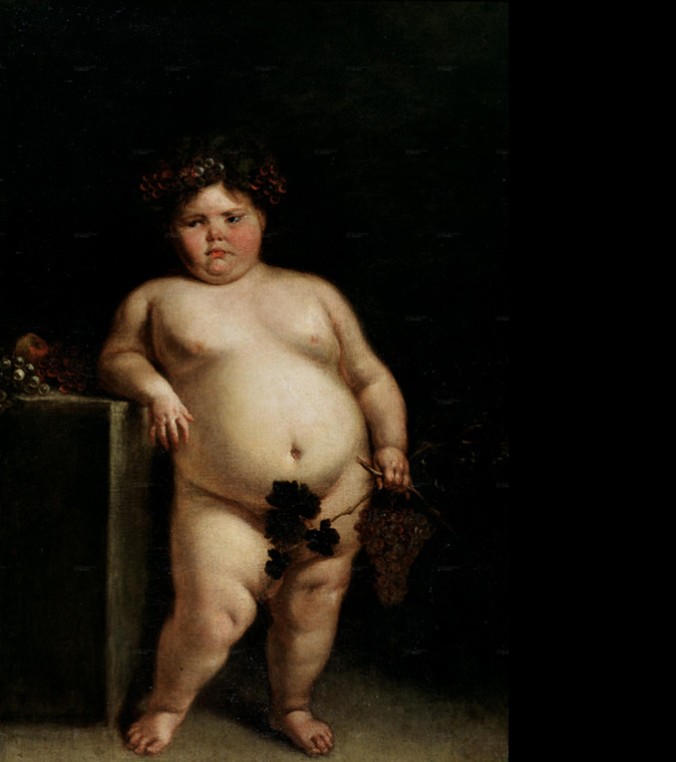
Eugenia Martínez Vallejo was paraded around on fairs to crowds. The role played by these individuals at the Court was often important. They provided company for the princes and princesses and because their height was similar to that of the children the Infantes felt at ease with them. Their age meant the royal children had a permanent confidante who assured that they were always taken care of as well as providing them with entertainment.
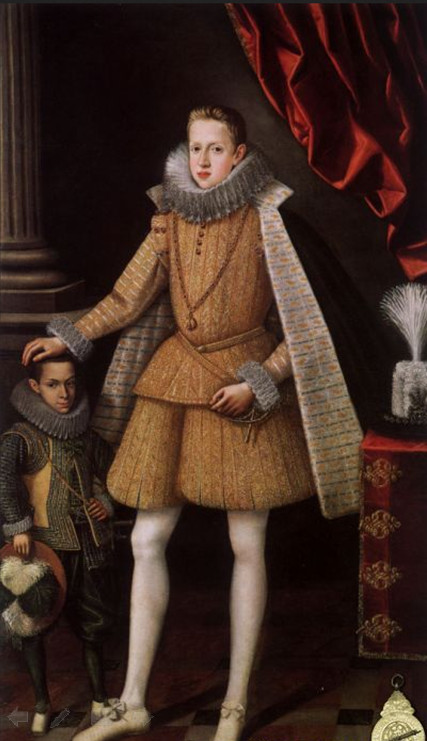
Soplillo, Jester at the Court of Philip IV, painting by Rodrigo de Villandrando
When they were older, the princes and princesses often kept these childhood friends at their sides such as Philip II’s daughter, Isabel Clara, who was often portrayed along with her own dwarf and cried more than anyone when she died.

Isabella Clara Eugenia, Archduke of Austria, with her dwarf, about 1600
This portraits was painted by one of the most highly esteemed court painters, Juan Carreño de Miranda (25 March 1614-3 October 1685), who used Eugenia as a model on a number of occasions. Juan Carreño depicted life at the court of Carlos II better than any other painter, revealing the weakness of the king who came to be known as „the Bewitched”. He refused to be knighted in the Order of Santiago, saying “painting needs no honors, it can give them to the whole world”.
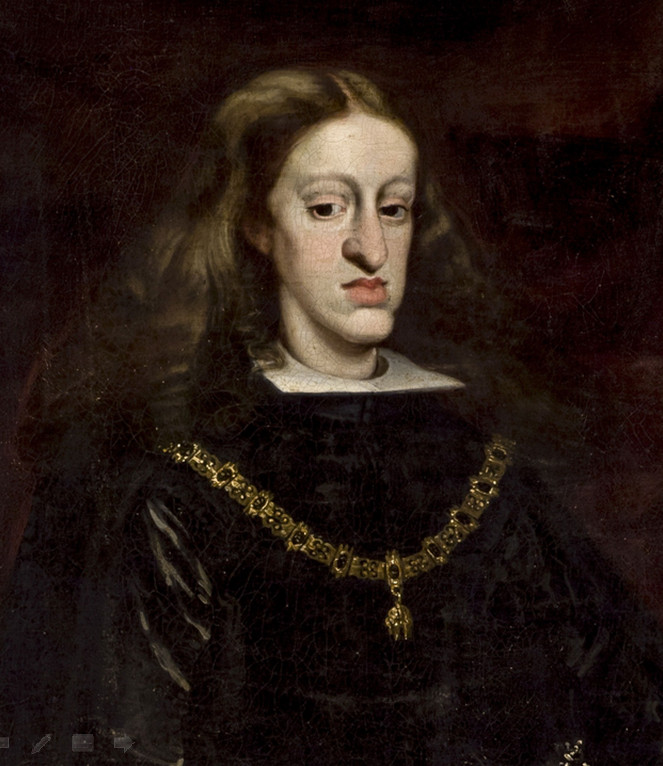
Carlos II (1661-1700)
Noble by descent, he had an understanding of the workings and psychology of the royal court as no other before him, making his portraits of the Spanish royal family in an unprecedented documentary fashion. Most of his works are portraits of the royal family and court, though there are early works commissioned mainly by the church, some altarpieces.
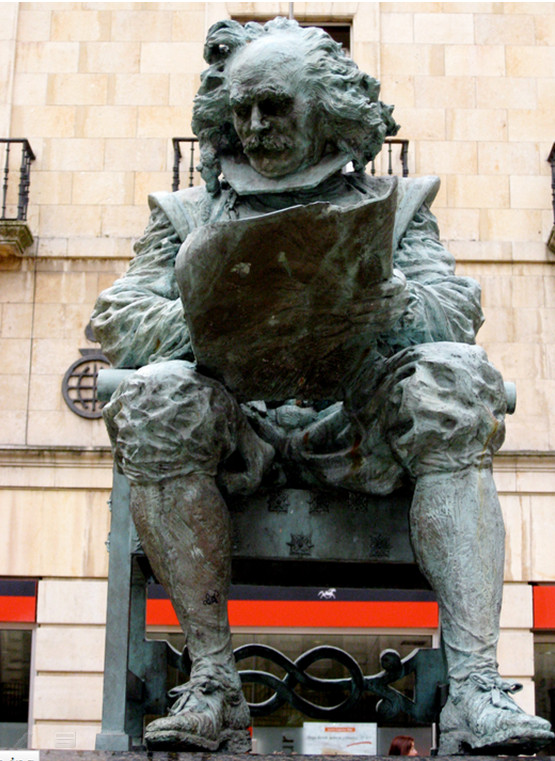
The statue of Juan Carreño by Miranda, (25 March 1614-3 October 1685), Avilés
Prader-Willi syndrome (PWS) is a rare, genetic disorder in which seven genes on chromosome 15 are deleted or unexpressed (chromosome 15q partial deletion) on the paternal chromosome. The syndrome was first described in 1956 by Andrea Prader, Heinrich Willi, Alexis Labhart, Andrew Ziegler, and Guido Fanconi. Characteristic of PWS is small hands and feet, short stature, low muscle tone, incomplete sexual development, cognitive disabilities, problem behaviors, and a chronic feeling of hunger that can lead to excessive eating and life-threatening obesity. The incidence of PWS is between 1 in 25,000 and 1 in 10,000 live births. PWS affects males and females with equal frequency and affects all races and ethnicities.

It is said that upon seeing the painting in the Prado Museum, Dr. Andrea Prader immediately recognized her features to be consistent with Prader-Willi Syndrome. Although we may never know if this child did in fact have PWS, the painting and descriptions of her condition strongly support this hypothesis. This painting is regarded as the earliest illustrations of PWS. La Monstrua has continued to be an intriguing figure as evidenced by an outdoor sculpture in Aviles created in 1997 by the Spanish artist Amado González Hevia who based his sculpture on Juan Carreño de Miranda’s portraits of Eugenia.
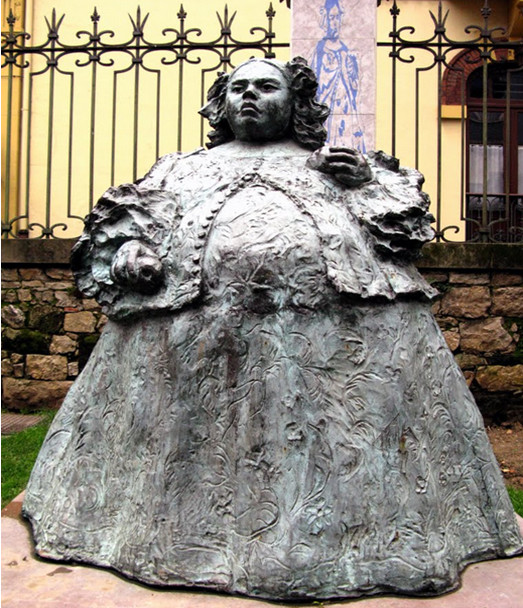
Eugenia Martínez Vallejo, sculpture by Amado González Hevia, Aviles, Spain
The maternal origin of the genetic material that is affected in the syndrome is important because the region of chromosome 15 involved, one of the most complex regions of the human genome, is subject to parent of origin imprinting, meaning that for a number of genes in this region only one copy of the gene is expressed while the other is silenced through imprinting. For the genes affected in PWS, it is the maternal copy that is usually imprinted (and thus is silenced), while the mutated paternal copy is not functional. This means that while most people have a single working copy of these genes, people with PWS have a non-working copy and a silenced copy. If the maternally derived genetic material from the same region is affected instead, the result is the oposite syndrome – Angelman Syndrome.
Nowdays, with the recent benefits of early diagnosis and ongoing interventions, the obesity rate among children with Prader-Willi Syndrome has decreased to be similar to the typical population.
Angelman, Prader-Willi, and Chromosome 15q Duplication syndromes are specific conditions caused by different genetic variants in the same genetic region. November 15th was declared The International 15q Day, to raise awareness of the similarities between the syndromes.

References
1. Ferrucci L, Studenski SA, Alley DE, Barbagallo M, Harris TB. Obesity in Aging and Art. J Gerontol A Biol Sci Med Sci 2010;65A(1):53-56.
- Als C, Stüssi Y, Boschung U, Tröhler U, Wäber JH. Visible signs of illness from the 14th to the 20th century: systematic review of portraits. BMJ 2002;325(7378):1499.
- Pozzilli P, Khazrai YM. “La Monstrua Vestida”, a case of Prader-Willi syndrome. J Endocrinol Invest 2005;28(2):199.